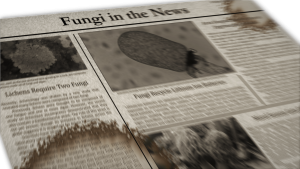#056: Artomyces pyxidatus, The Crown-Tipped Coral Fungus
This beautiful coral mushroom is easily distinguished by its distinctive tips. The tip of each branch sports a number of small points that surround a bowl-like, central depression. It is this crown-like arrangement that earned the Crown-Tipped Coral its common name. No other coral fungi in North America have this distinctive crown pattern, so pyxidatus is easy to identify. The fruiting body is a medium-sized to large, branching structure, like other coral fungi. Each branch develops from one of the tips at the end of another branch. Older branches at the base of the mushroom are thicker to support the rest of the structure. The coral fungus varies in color from white to yellowish to tan, with the newly-formed branches at the top lighter than the old branches at the base.







![#011: Characteristics of Kingdom Fungi [Archived]](https://www.fungusfactfriday.com/wp-content/themes/hueman/assets/front/img/thumb-small-empty.png)

